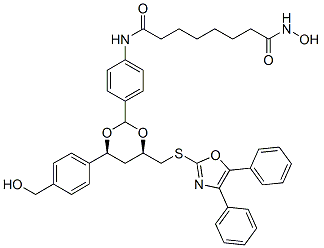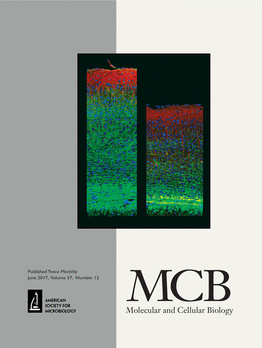All AbMole products are for research use only, cannot be used for human consumption.

Tubacin (Tubulin Acetylation Inducer) is a highly potent and selective, reversible cell-permeable inhibitor of HDAC6 with IC50 of 0.004µM. The IC50 for the other HDACs are 1000-fold higher, making tubacin both more selective and more potent than Tubastatin A, which also inhibits HDAC8. Concentration in cell culture experiments typically ranges from 2-50µM.

Mol Cell Biol. 2016 Oct 28;36(22):2838-2854.
Activated Transcription Factor 3 in Association with Histone Deacetylase 6 Negatively Regulates MicroRNA 199a2 Transcription by Chromatin Remodeling and Reduces Endothelin-1 Expression.
Tubacin purchased from AbMole
| Cell Experiment | |
|---|---|
| Cell lines | ALL cells and normal T lymphocytes |
| Preparation method | Growth inhibition assay The inhibitory effect of tubacin on ALL cells and normal T lymphocytes was assessed by colorimetric assay, 3-(4,5-dimethylthiazol-e-yl)- 2,5-diphenyl tetrazolium bromide (MTT; AbMole). Only active mitochondria dehydrogenase enzymes can perform cleavage of a tetrazolium ring, and therefore the amount of purple formazan generated by cells with a drug was compared with the amount of formazan produced from non-treated cells. Absorbance readings at a wavelength of 550 nm were taken on a spectrophotometer. Cells from 72 h cultures were incubated with 10 μL of 5 mg/mL MTT for 2 h, followed by 100 μL isopropanol that contained 0.1 N HCl. Normal T lymphocytes were incubated with MTT for 30–37 min. All experiments were performed in triplicate. |
| Concentrations | 0, 0.5, 1, 1.5, 2, 2.5µM |
| Incubation time | 72 h |
| Animal Experiment | |
|---|---|
| Animal models | Xenograft system of primary leukemia samples |
| Formulation | saline |
| Dosages | 50 mg/kg/day |
| Administration | intraperitoneally |
| Molecular Weight | 721.86 |
| Formula | C41H43N3O7S |
| CAS Number | 537049-40-4 |
| Solubility (25°C) | DMSO 90 mg/mL |
| Storage |
Powder -20°C 3 years ; 4°C 2 years In solvent -80°C 6 months ; -20°C 1 month |
| Related HDAC Products |
|---|
| CM-444
CM-444 is an inhibitor for HDAC and DNA methyltransferases (DNMT) with IC50 values of 6 nM-0.6 μM and 1.8-2.3 μM, respectively. CM-444 is an inducer for the differentiation of acute myeloid leukemia cells. CM-444 exhibits anti-leukemic activity and improves the survival rate in mouse models. |
| CM-1758
CM-1758 is a histone deacetylase (HDAC) inhibitor. CM-1758 inhibits tumor growth in vivo. CM-1758 induces acetylation of non-histone proteins in acute myeloid leukemia cells. |
| T-518
T-518 is an orally active, selective, and blood-brain barrier permeable HDAC6 inhibitor with an IC50 value of 36 nM for human HDAC6. |
| SE-7552
SE-7552, a 2-(difluoromethyl)-1,3,4-oxadiazole (DFMO) derivative, is an orally active, highly selective, non-hydroxamate HDAC6 inhibitor with an IC50 of 33 nM. |
| BRD9757
BRD9757 is a potent, capless and selective HDAC6 inhibitor with an IC50 of 30 nM. |
All AbMole products are for research use only, cannot be used for human consumption or veterinary use. We do not provide products or services to individuals. Please comply with the intended use and do not use AbMole products for any other purpose.


Products are for research use only. Not for human use. We do not sell to patients.
© Copyright 2010-2024 AbMole BioScience. All Rights Reserved.
